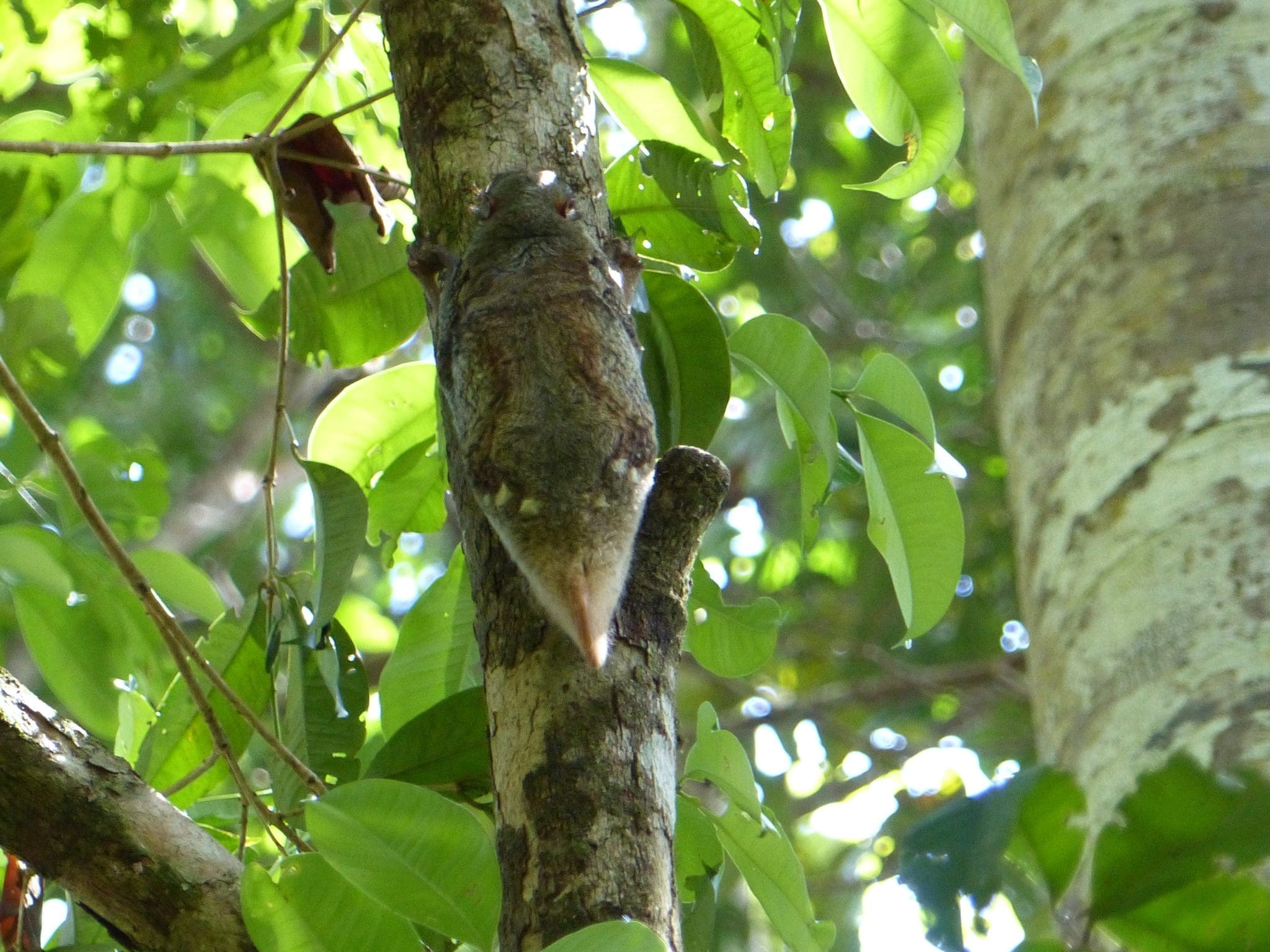My family was on an excruciatingly short visit to Borneo. We had three days in Kuching, the capital and the largest city of the southern Malaysian province of Sarawak, and all that we heard from the local people on our first rain-washed afternoon there was, “You also going Sabah?” And when we shook our heads, they responded likewise, clicking their tongues and muttering, “Nice forest, Sabah. Proboscis monkey. Orangutan. Rafflesia. Colugo…”
Sabah, to the north of Sarawak and bordered by the tiny, oil-rich monarchy of Brunei, is famous for Malaysia’s best-known UNESCO World Heritage Site, Mount Kinabalu, and its wealth of wildlife and nature. But we had no plans for Sabah. Three days in Sarawak seemed all too short once we landed on the island of Borneo, despite all the reading we had done before our arrival. On the day we landed, we strolled by the Sarawak River in Kuching and took shelter from a mid-morning downpour that came down in sheets for two hours. And this, we were told, was the dry season. After some quick, curated orangutan encounters in the rainforest fragments of Semenggoh on the day we landed, we made hurried plans, overpaying in desperation for our trip the next day to Bako National Park.
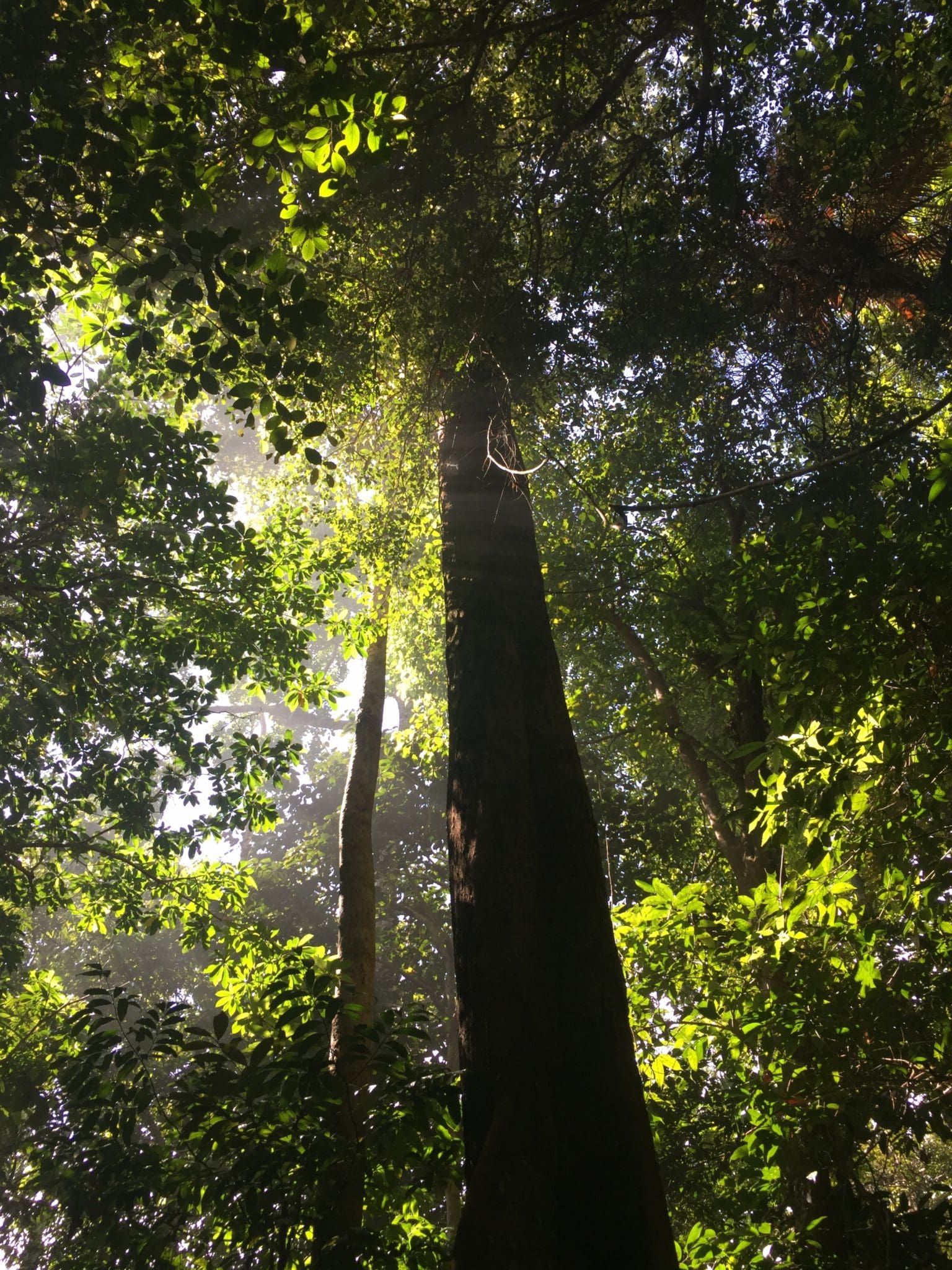
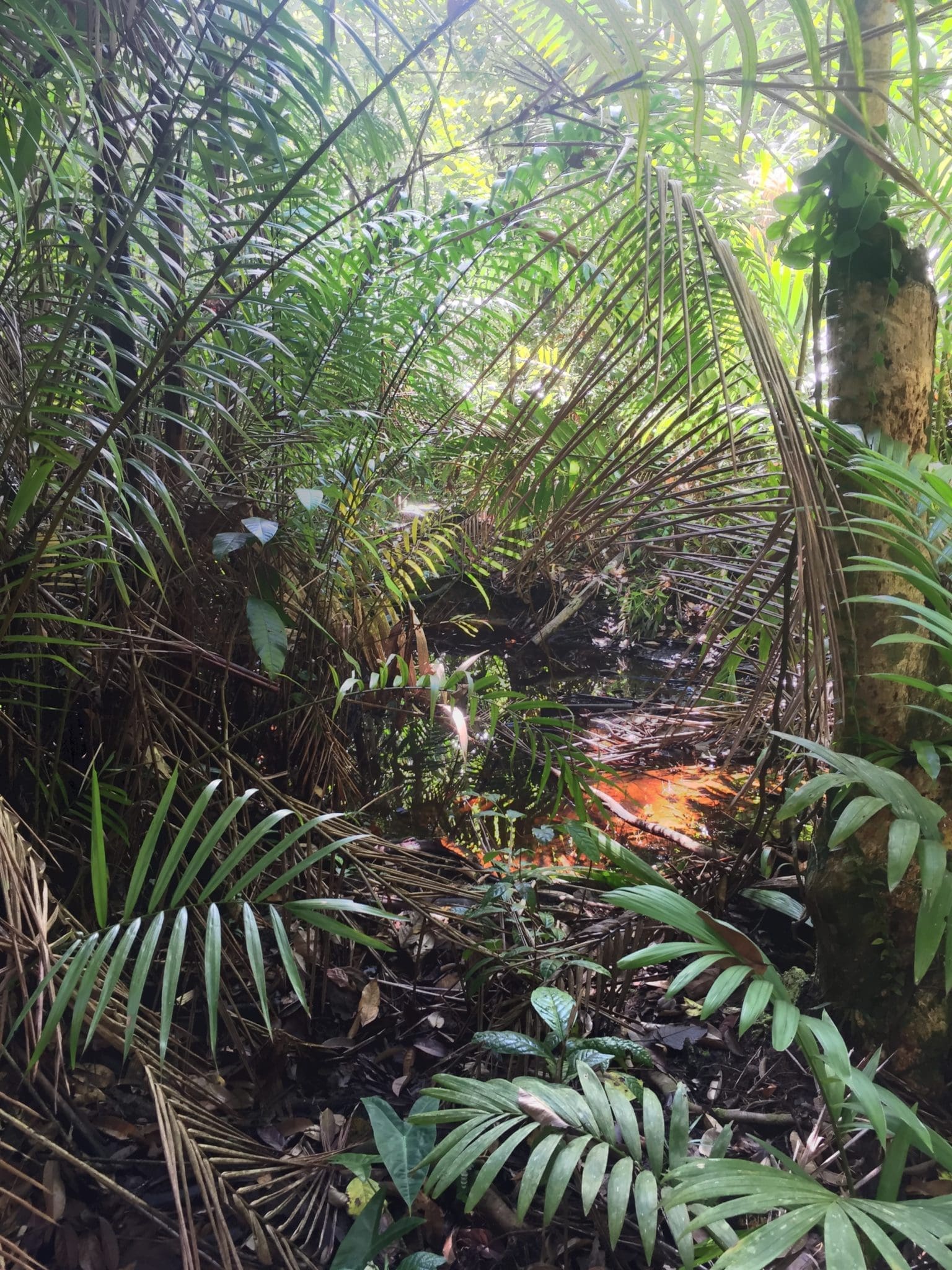
It was a glorious morning — clear, warm and sunny — when we rode a motor launch from the jetty to the rainforest entry point. The speedboat took us along the turbid Sungai Tabo stream for a few kilometres past ramshackle fishing villages and stands of ancient forest, much of it hopelessly logged and denuded, then cut into a broad, choppy channel and docked us near a stand of lush coastal forest on the edge of a mangrove-lined estuary.

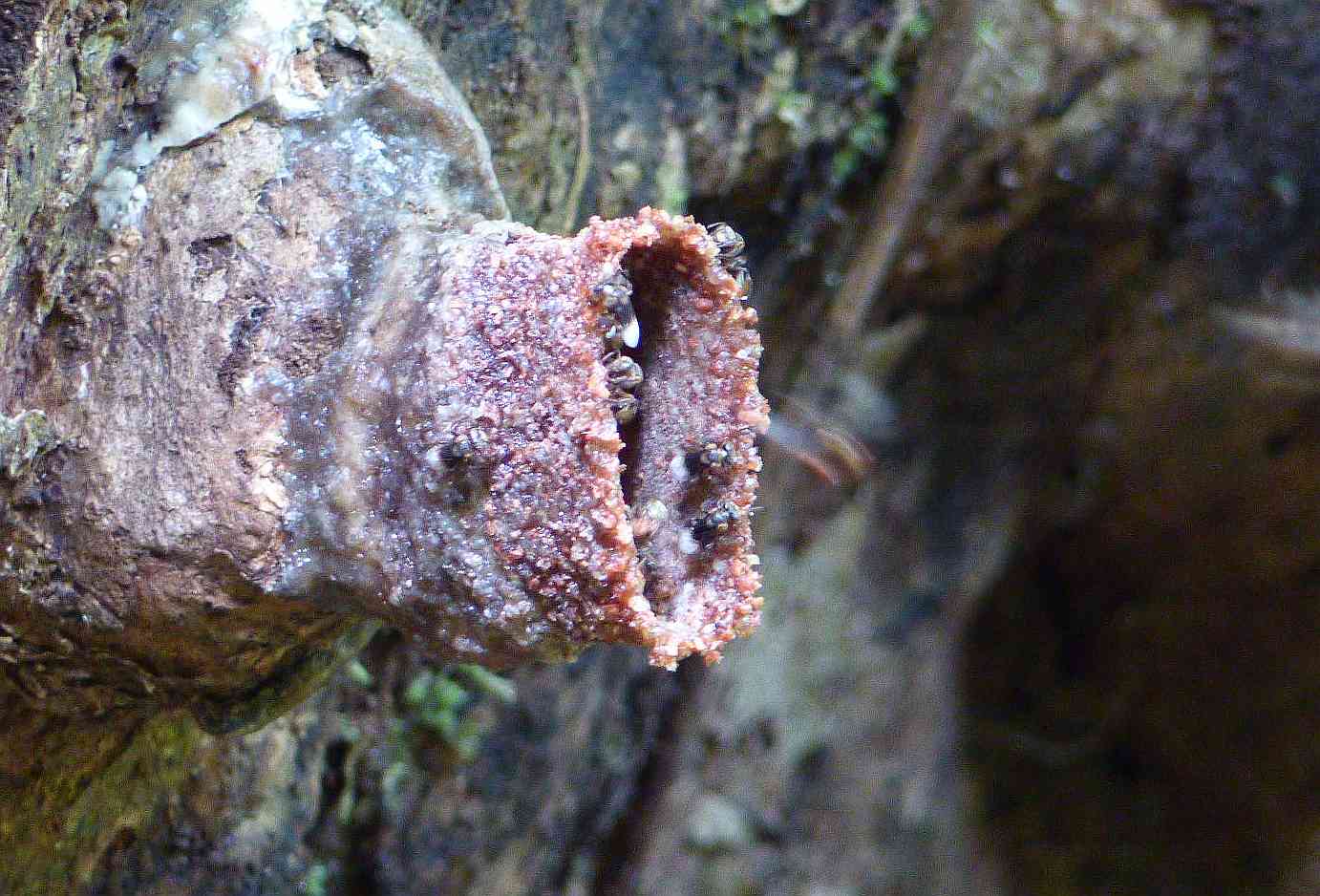
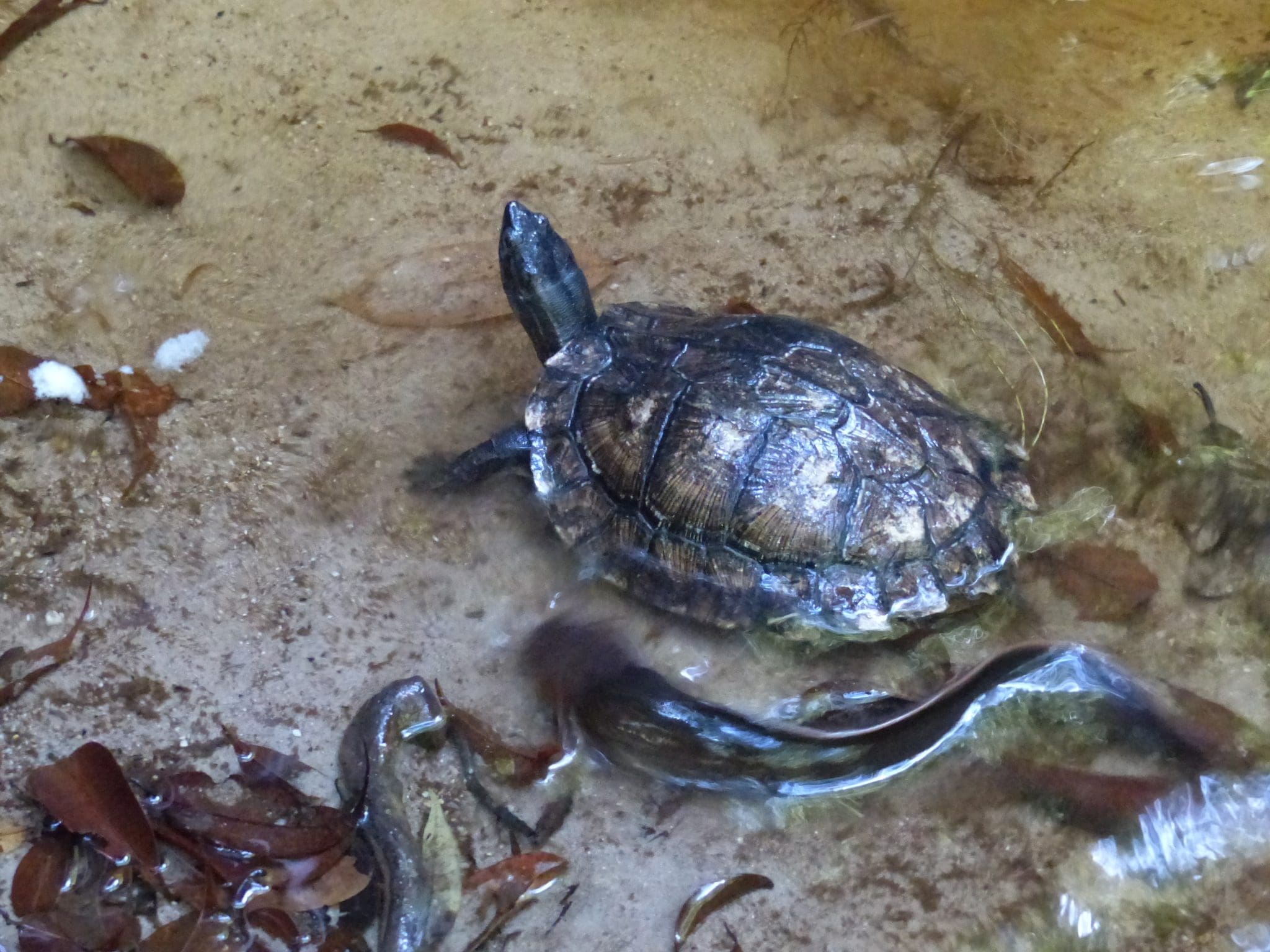
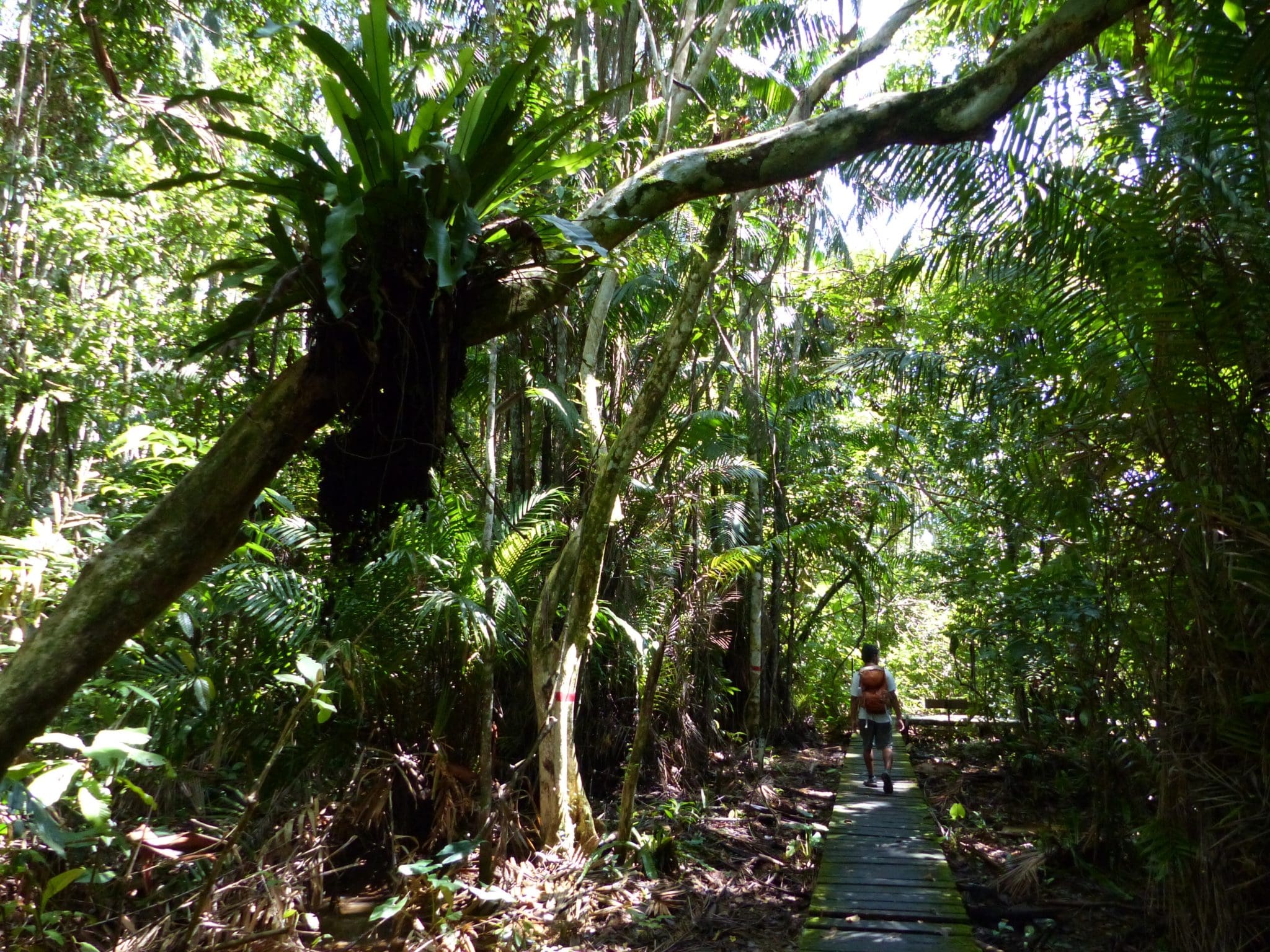
Our guide Pongo took us on a short boardwalk trail through the coastal rainforest. It was lush, humid and beautiful. Trees rose high from the mulchy earth, shutting out the blazing forenoon sun. A Bornean bearded pig (Sus barbatus) fed nonchalantly on roots and tubers. Another walked up to the guesthouse and sought its fortunes near the garbage bins, tempting tourists to amble over and photograph it. Near the restaurant, bright green Wagler’s Pit Vipers (Tropidolaemus wagleri) sunned on tree limbs.
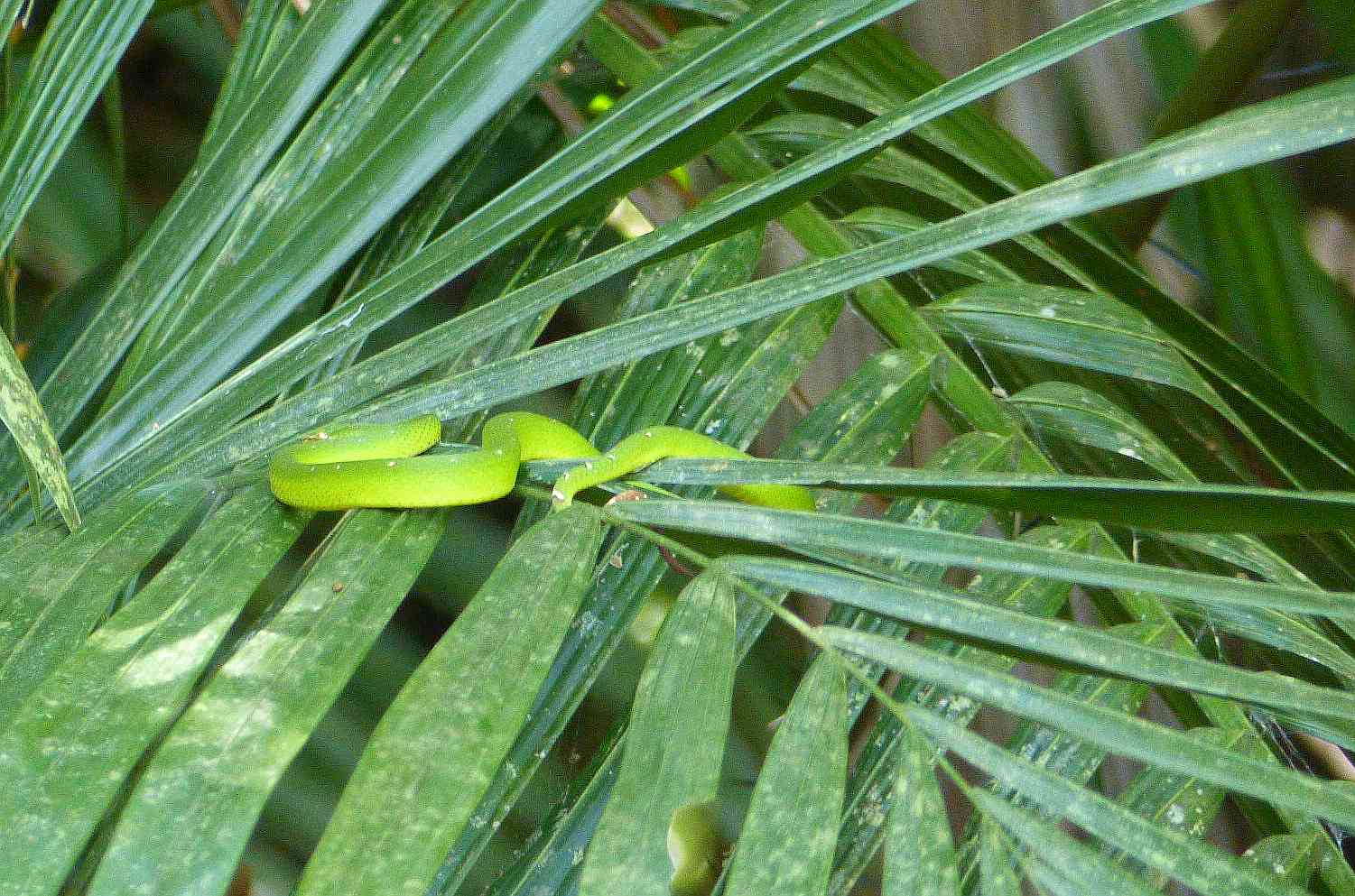
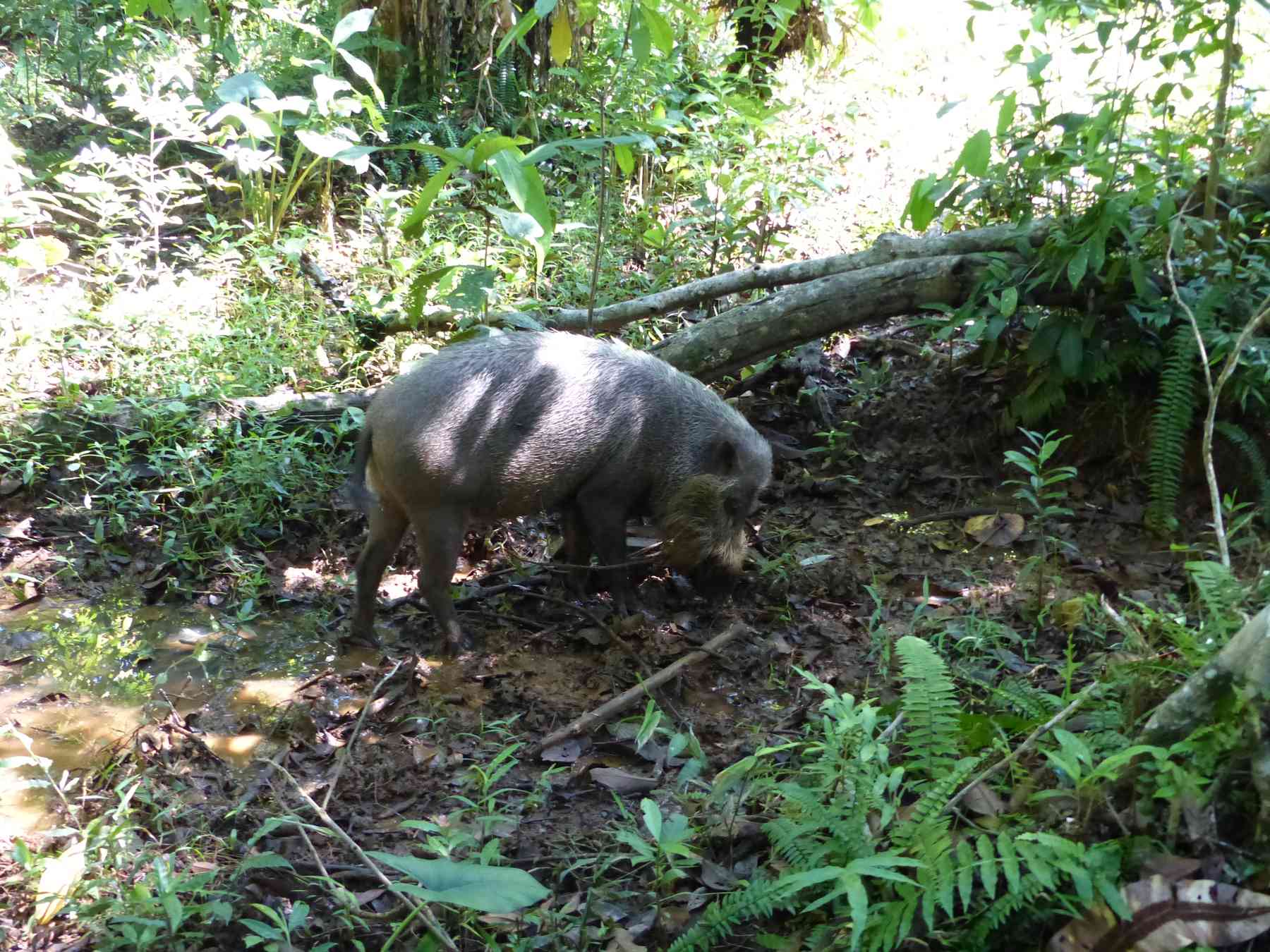
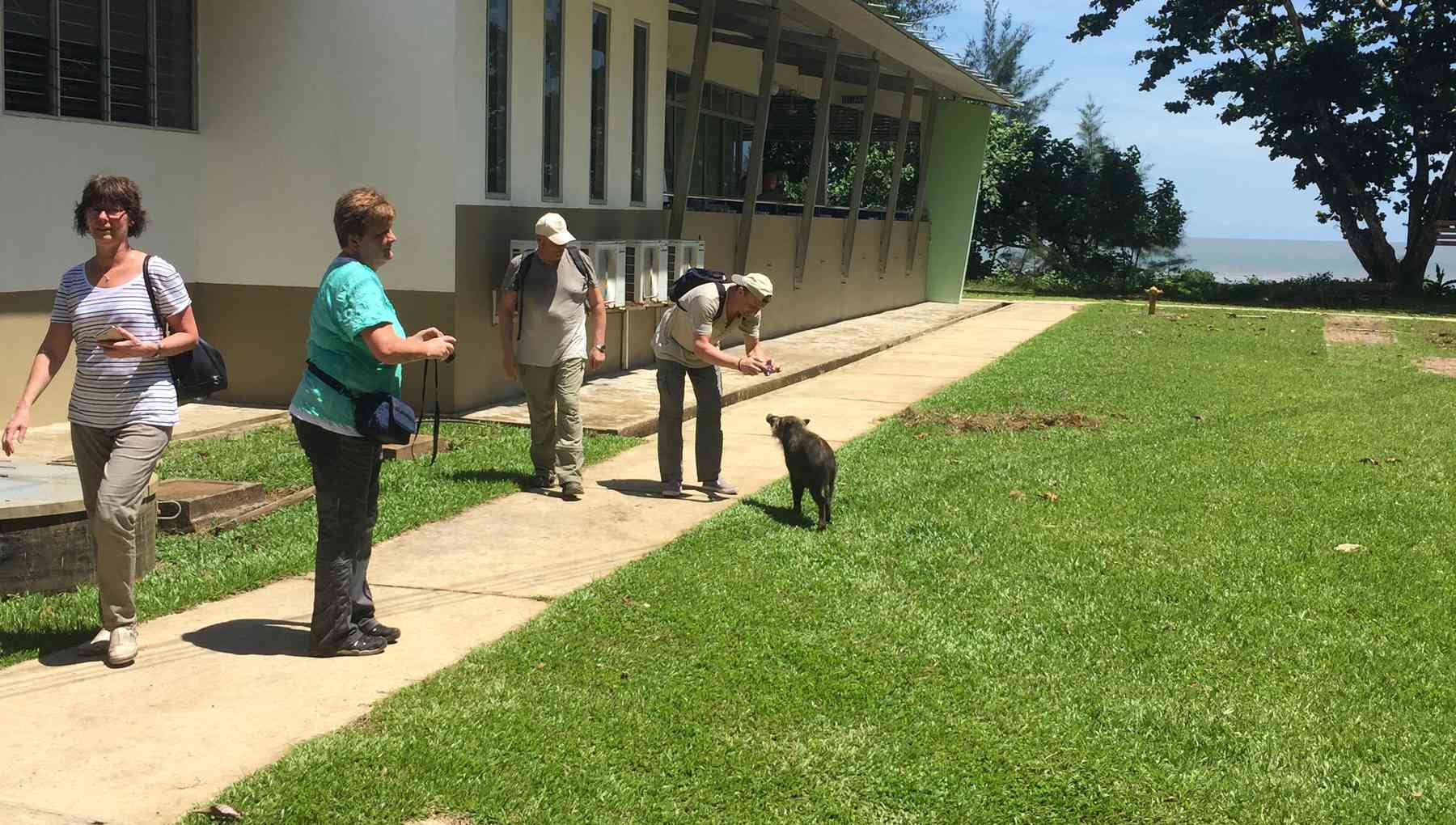
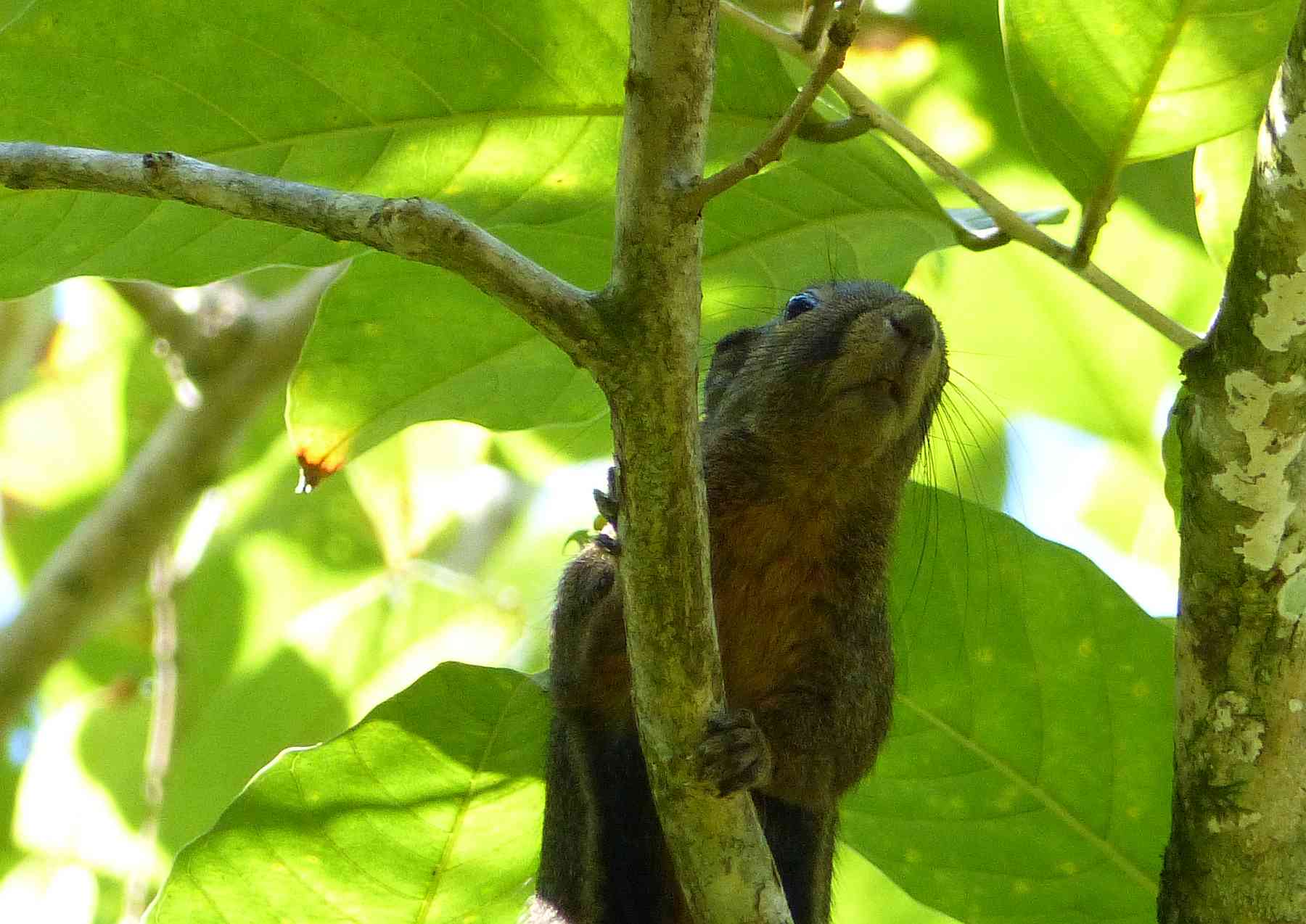
We kept to the trail. A startled Plantain Squirrel (Callosciurus notatus) scurried up a tree trunk, then shinnied up into the canopy from where it shrieked insults at us. The boardwalk was well maintained but parts of it were slippery with moss, so we walked cautiously. Tiny bridges led us over creeks patrolled by fiddler crabs brandishing their oversized claws. In a freshwater stream deep inside the forest, catfish nuzzled our fingers curiously. A little black terrapin came along to watch us, sticking its neck out with expectation. Pongo, to my horror, fished out some breadcrumbs from his pocket and fed the wild reptile. His trick was a hit with my little girl — and I had to give her a lesson later that evening when we got back to the hotel about the importance of keeping wild things wild. Along the stone walls of a cliff, little Glossy Swiftlets (Collocalia esculenta) nested. There were bird calls aplenty, but most of the culprits behaved as they do in a rainforest — they made themselves scarce.
We began to look for Proboscis Monkeys (Nasalis larvatus). There was one troop here, Pongo told us, that revealed itself to visitors whenever it pleased. After three hours of roaming the trails, sweat dribbling down our backs in the cool but humid forest, we realised today wasn’t going to be one of those days. Instead, a troop of about 50 inquisitive Long-tailed Macaques (Macaca fascicularis) showed up and gave us unwanted company as we navigated the trail. Back on the coastal forest trail, Pongo said that if we were lucky, we might see a colugo. That got my blood up.
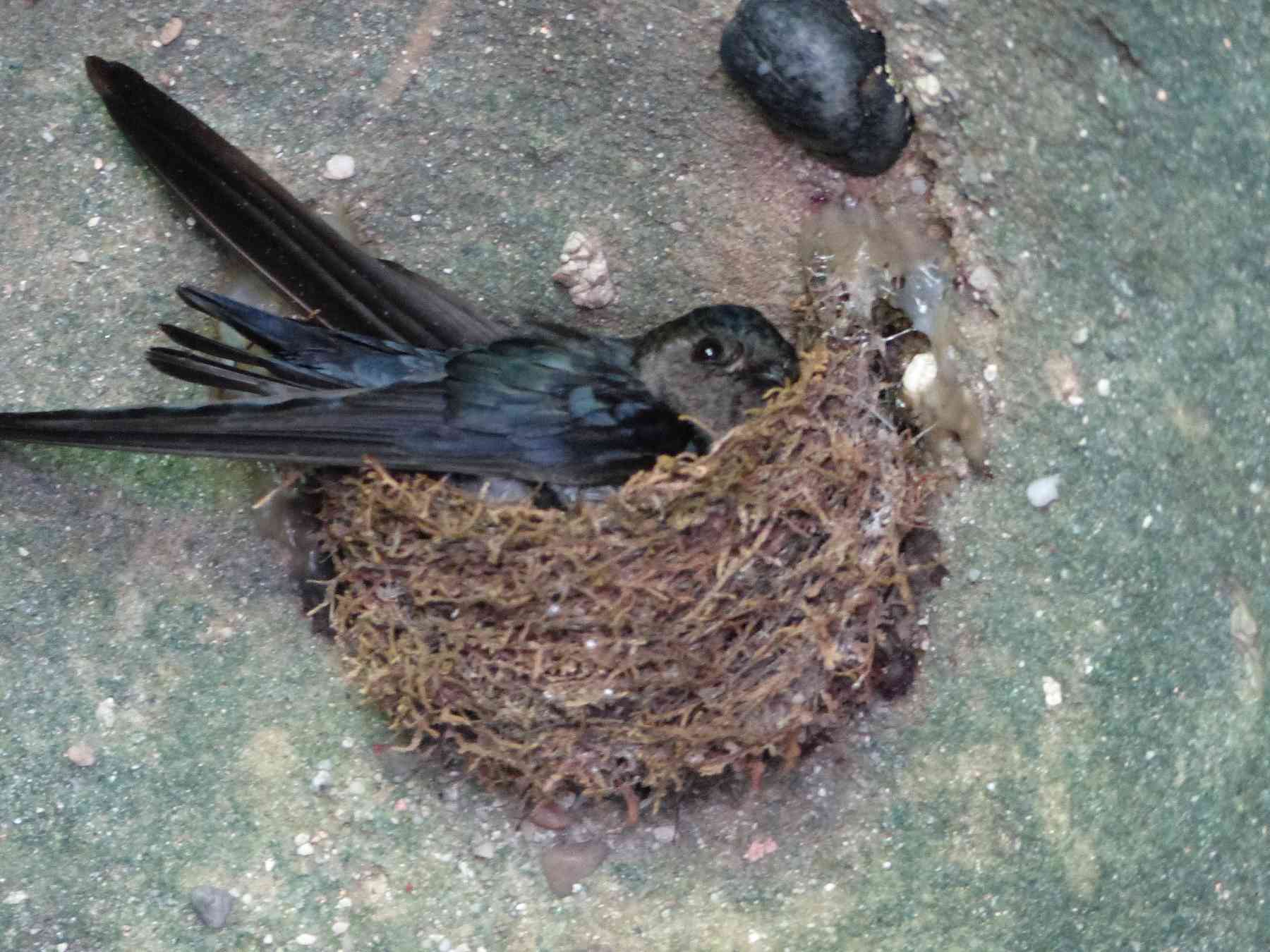
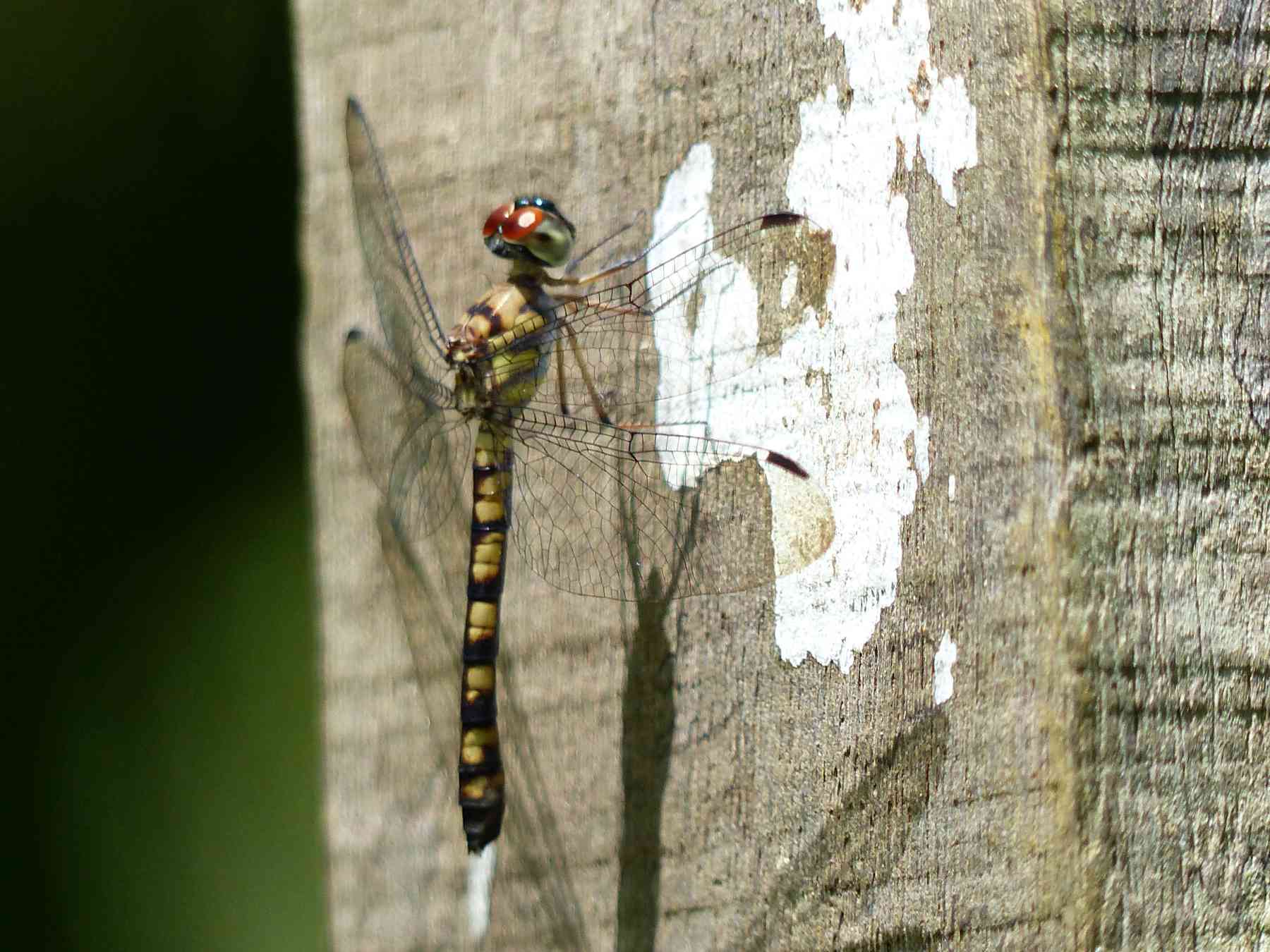
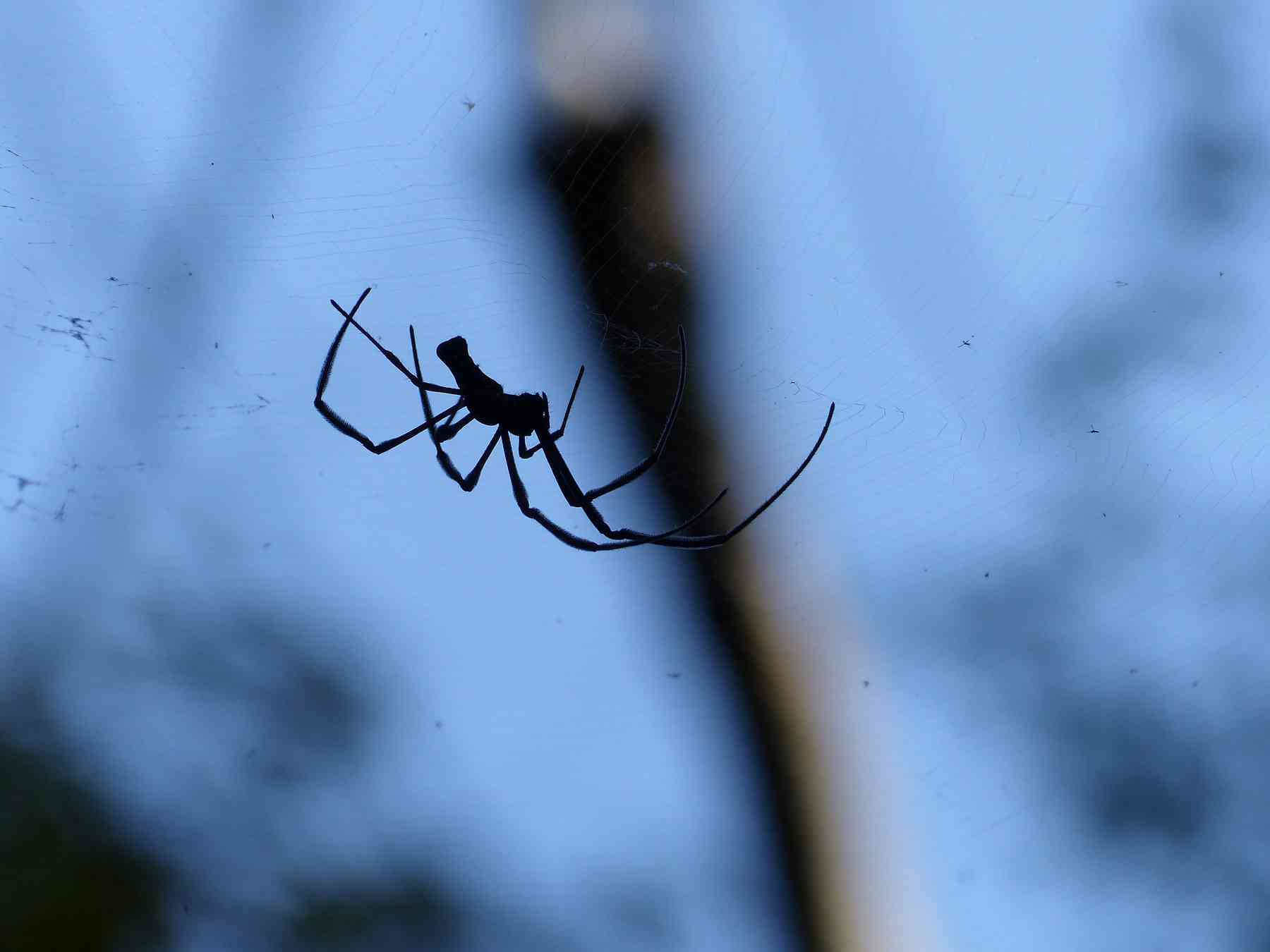
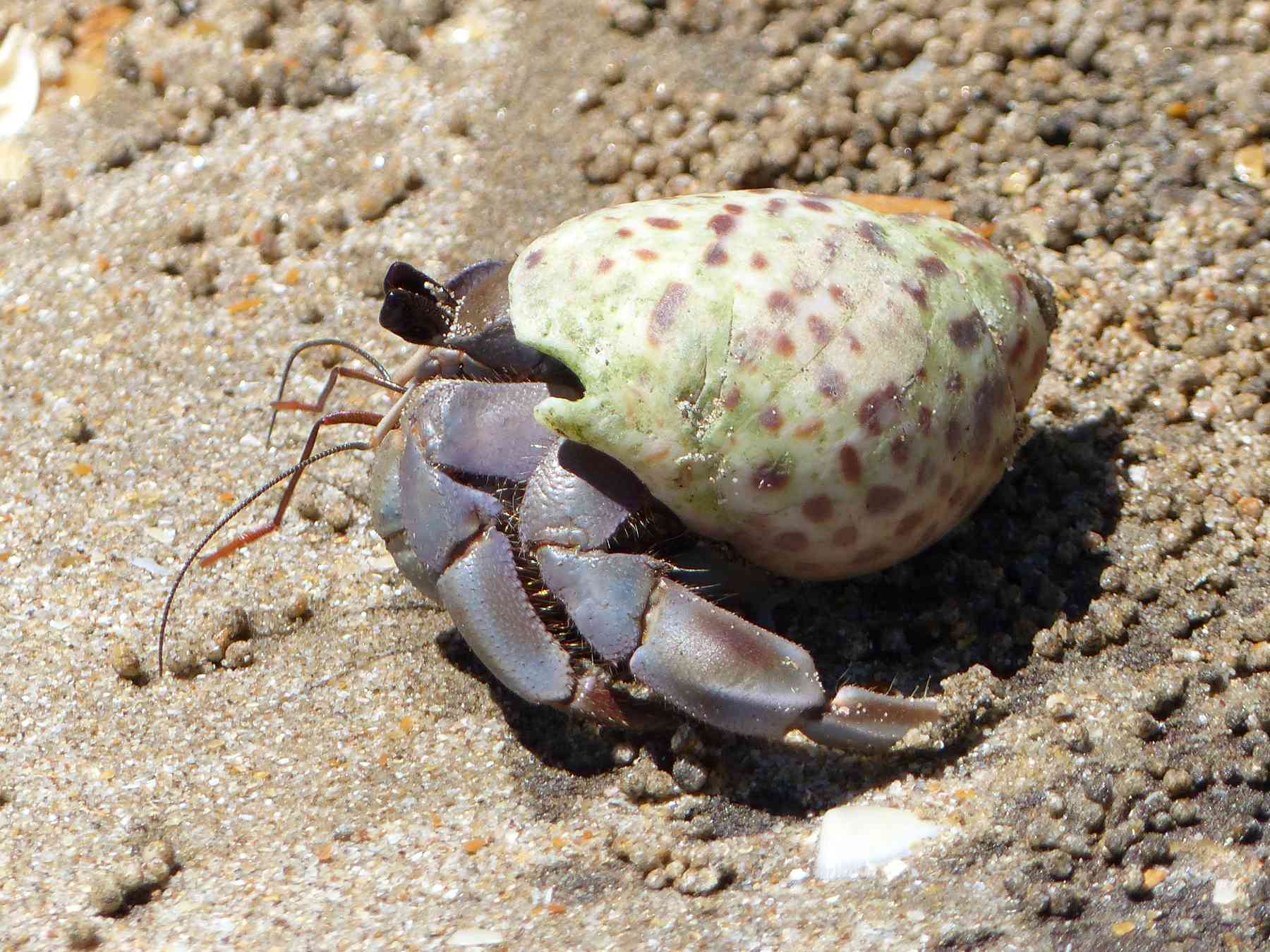
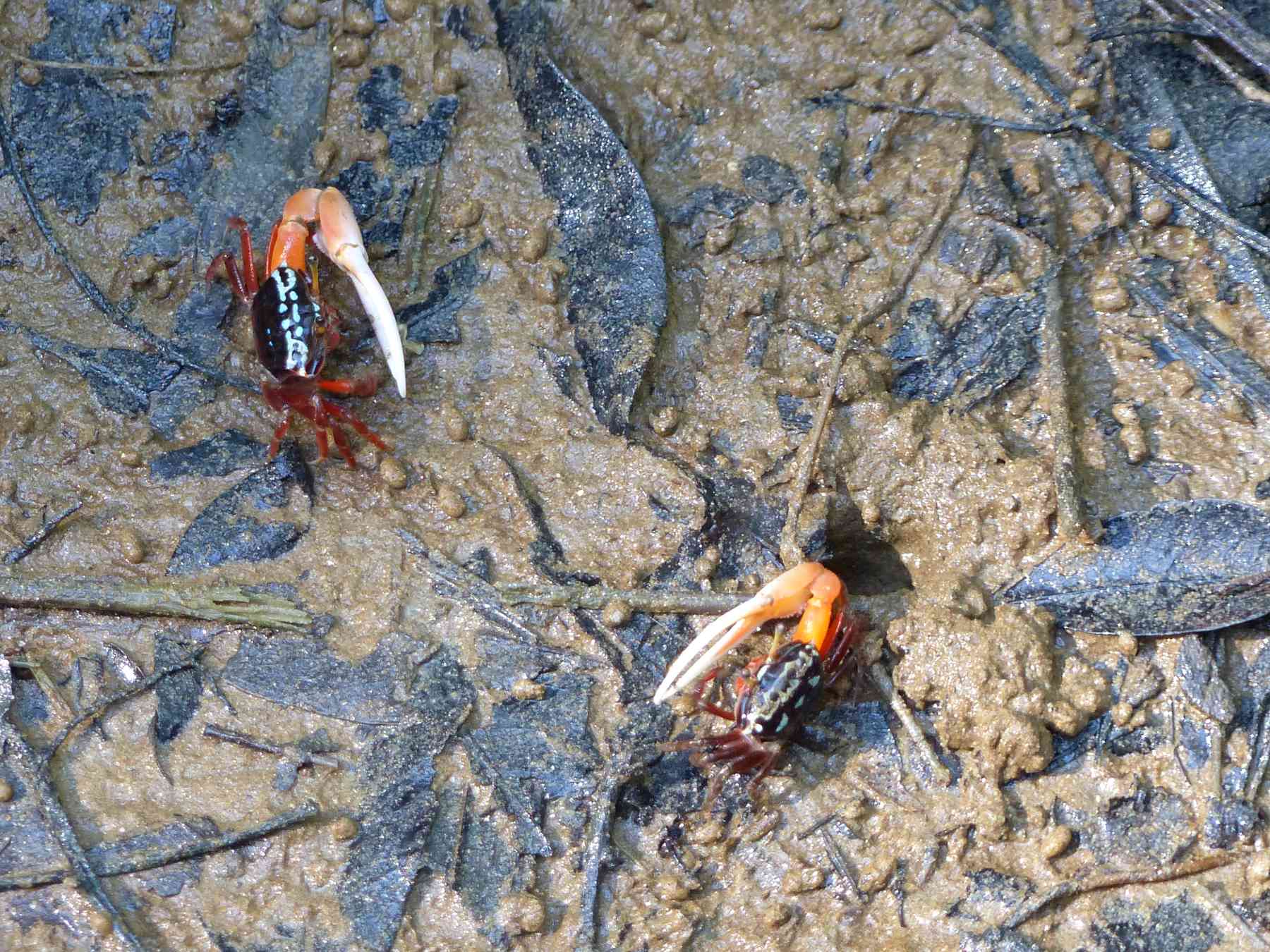
The Colugo, quite erroneously known as the Flying Lemur, is an arboreal gliding mammal. It was thought to be related to flying squirrels, but it isn’t. Since they glide, it was thought that they shared a common ancestry with bats, but we know now that’s not true. It was then thought that its nearest kin were primates like the lemurs of Madagascar, but that contention is too simplistic and not entirely accurate either. The Colugo, like the Tree Shrew, is classified by some taxonomists under the grand order Euarchonta.
The Colugo found in these parts, also known as the Sunda Flying Lemur (Galeopterus variegatus), is actually one of two species of animals in the order Dermoptera. They are completely arboreal and nocturnal, and feed entirely on fruits, flowers, leaves, tree sap and other vegetable matter. They have a large folded membrane of skin — called a patagium — that stretches between the forelegs and the hindlegs when the animal is in motion.
There’s something else about the Colugo that is interesting. Despite being a placental mammal, it raises its young in a behaviour closely resembling that of marsupials. The underdeveloped newborns spend their early life clinging to the mother’s belly, nursing. The mother curls its tail and creates a sheltering pouch within the folds of its patagium. We hoped to see a female colugo with its infant, but our luck seemed to be running out.

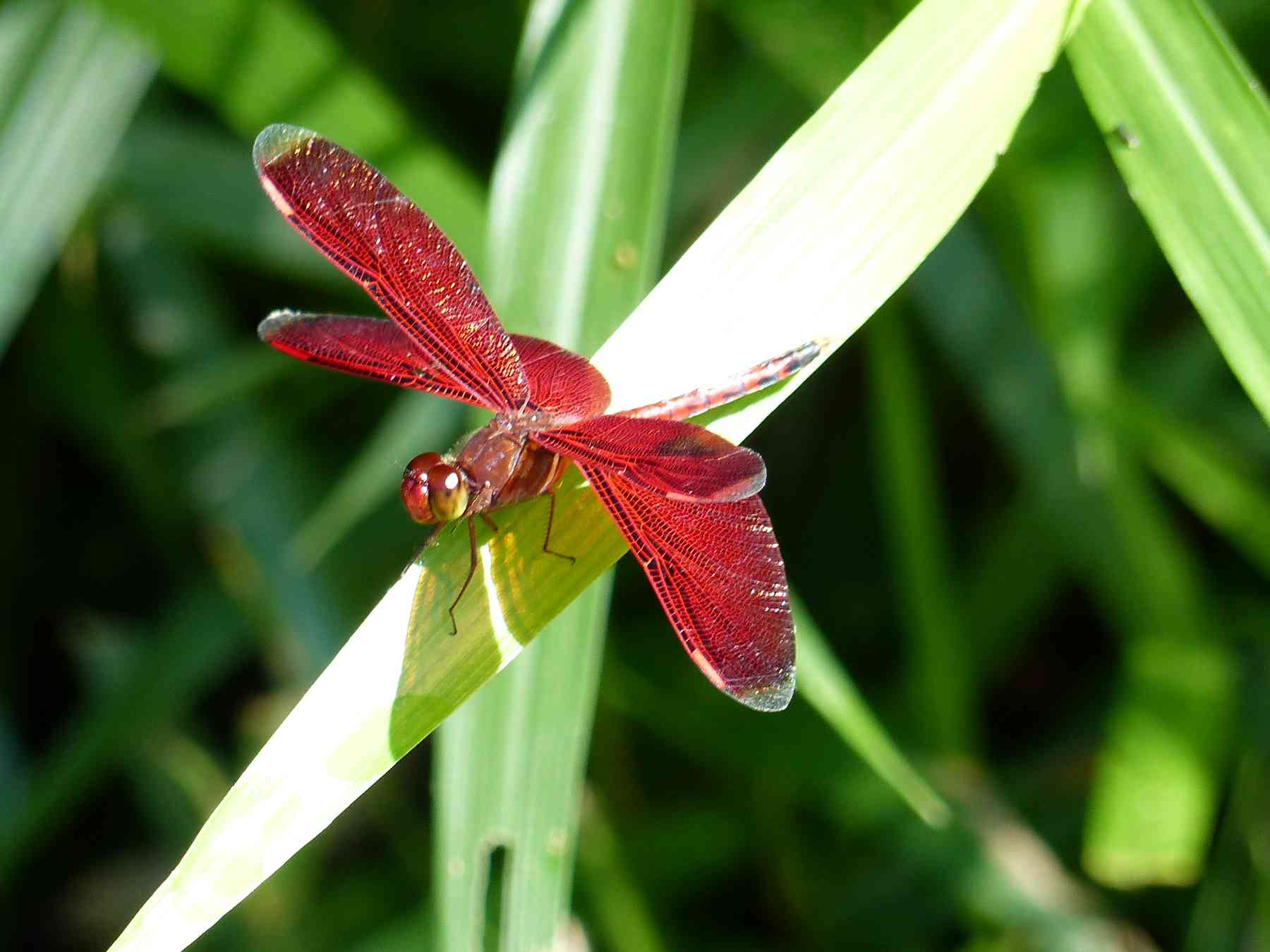
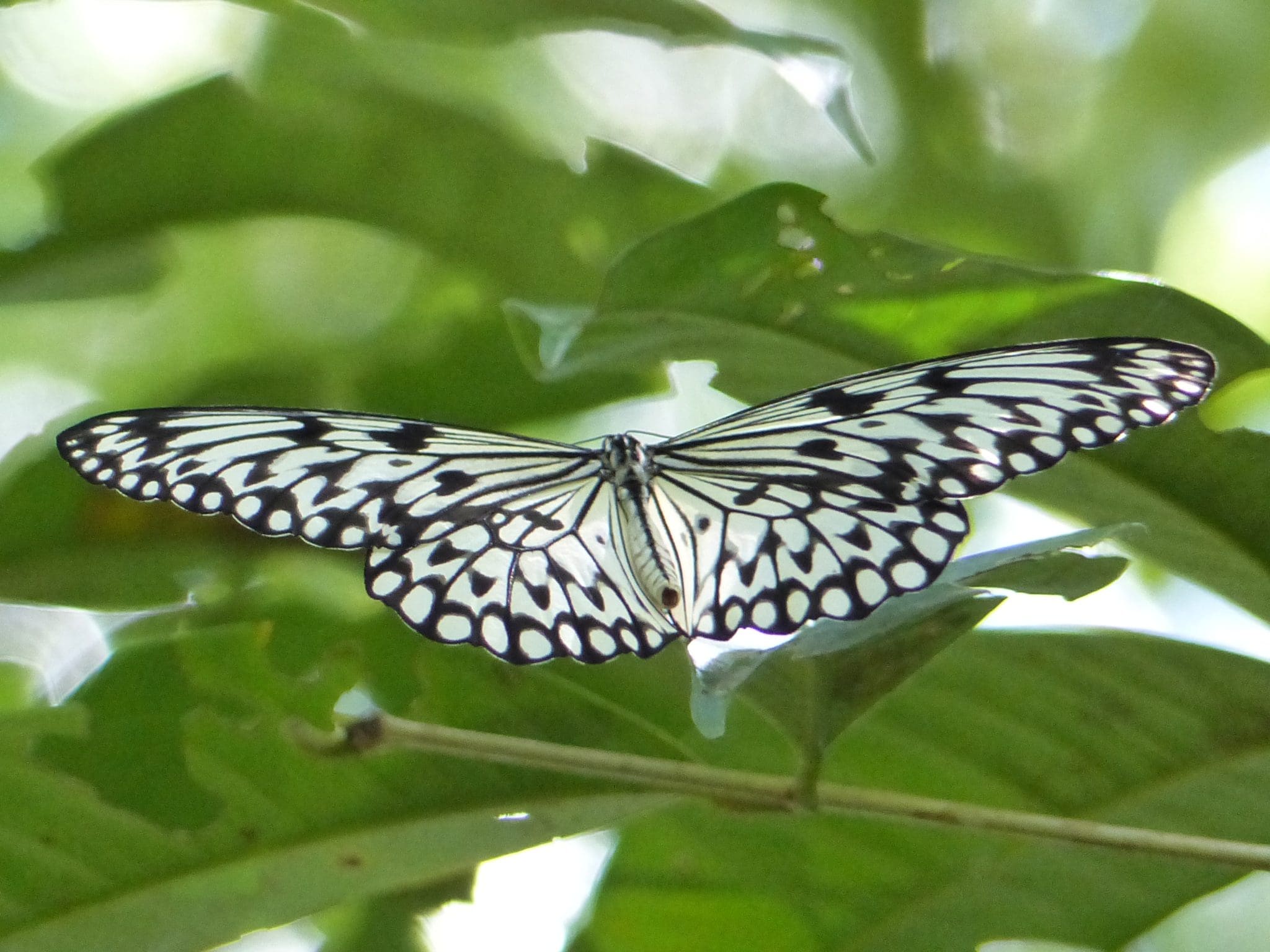
My eyes followed the dance-like flight of a Common Tree Nymph (Idea stolli) and I recalled how similar it looked — almost identical, in fact — to a pair of Malabar Tree Nymphs (Idea malabarica) that I had seen in the rainforest of Katlekan in Sharavathi Valley, Karnataka earlier that year. This species was easier to photograph, though, and the light rained on it beautifully. As I watched it, mesmerised, Pongo called excitedly from ahead on the trail.
“Colugo,” he said. I left my pursuit of the butterfly and followed his gaze to the trunk of a tree. I saw nothing. The rest of us took turns peering through the binoculars but saw nothing, too. “There,” he hissed, “there!” But I just saw the lichen-mottled bark of a tree.
“Look up,” he said. “No, look down!”
For five minutes each of us took turns scanning the canopy of the tree that Pongo said hosted the Colugo. We saw nothing.
Then I saw it. “Wow!” I said and handed the binoculars to my wife, who had no idea where to look.
Then she, too, said, “Wow!”
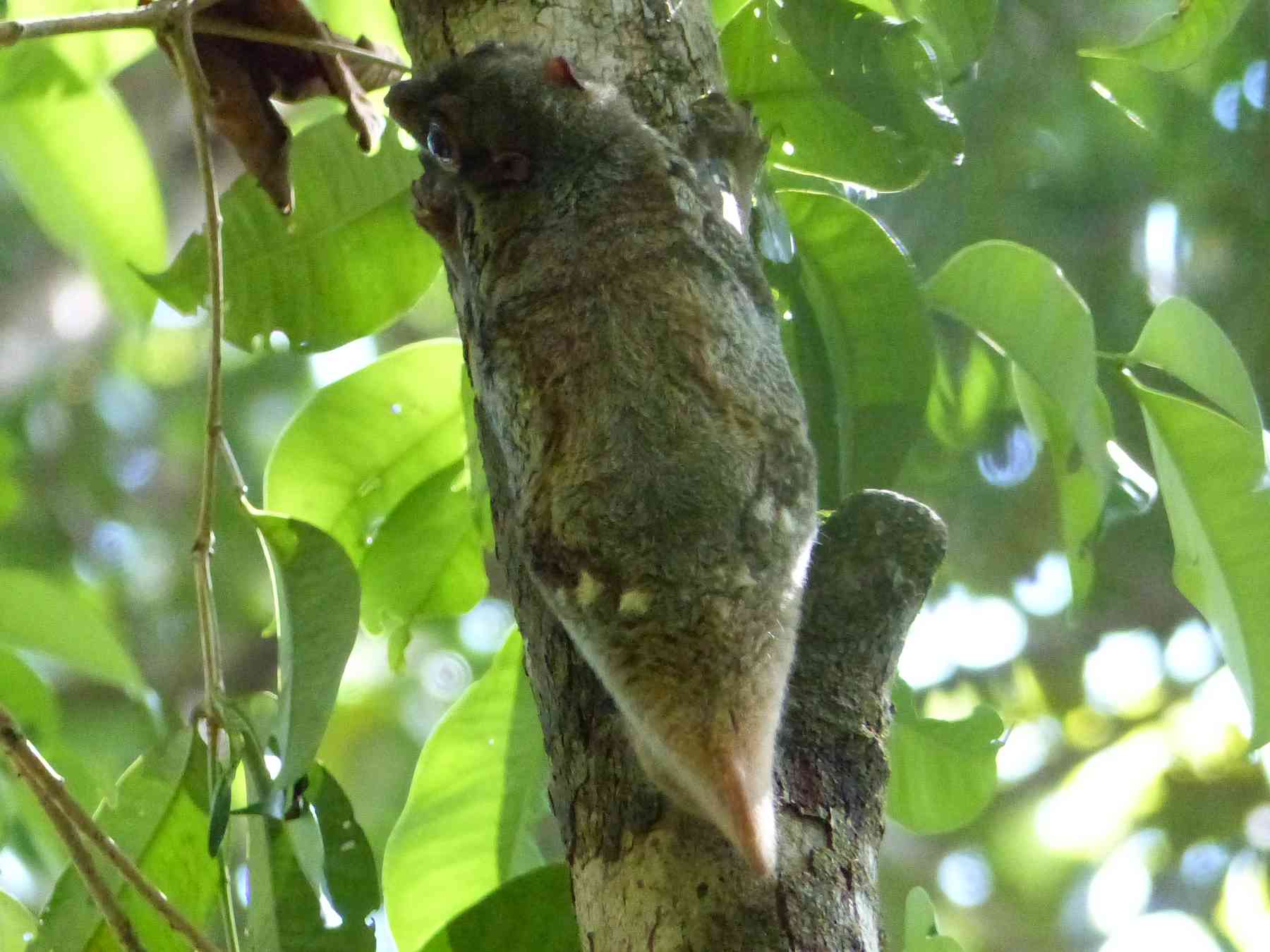
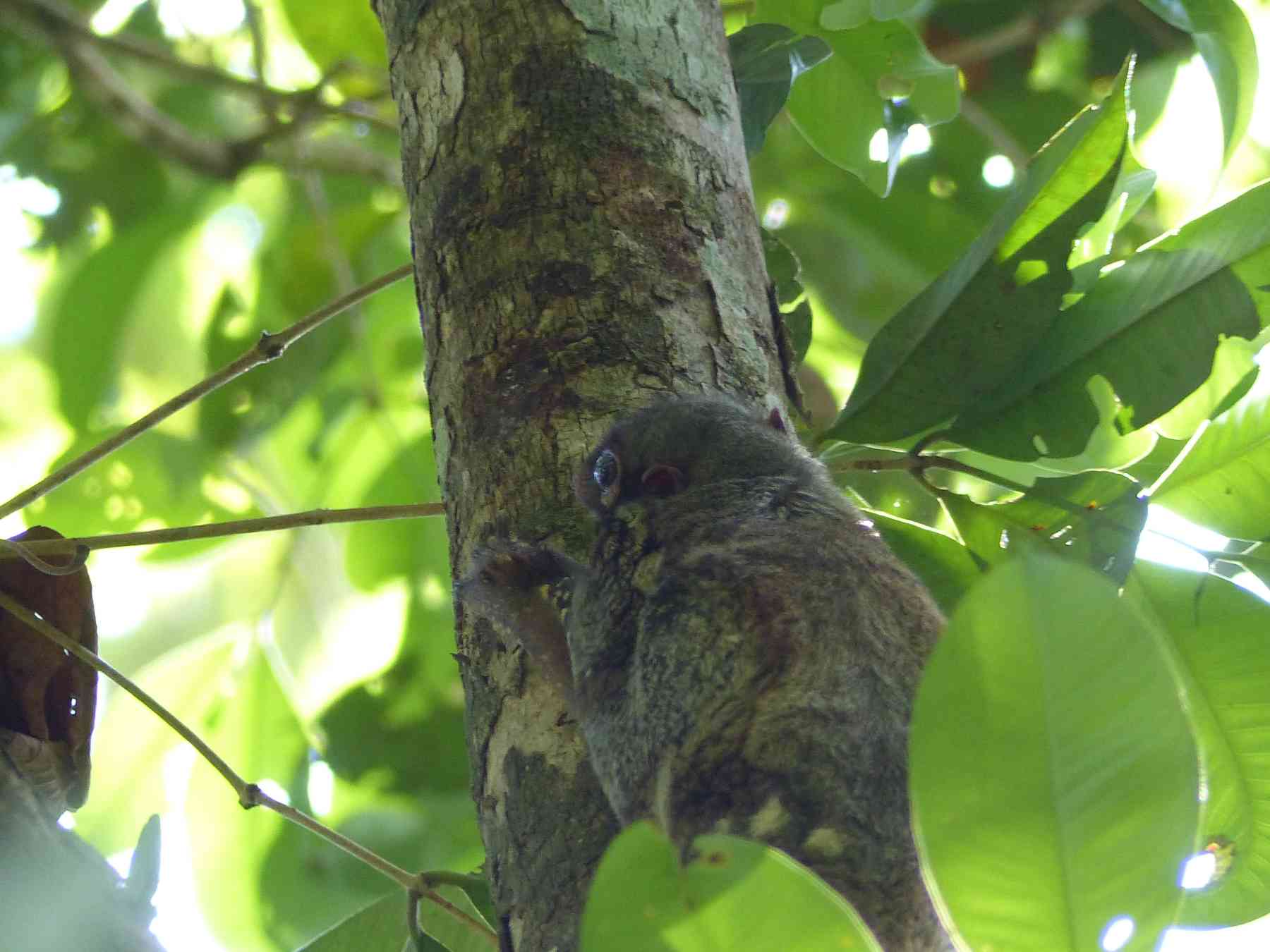
My daughter had no clue what we were marvelling at. “Where, where?” is all she asked.
Finally, I took a very bad, shaky photograph and asked her to scan the tree trunk for it. Then she too said, “Wow!”
Pongo grinned with satisfaction.
The Colugo was a very strange creature indeed. At first glance we only saw a cryptic patch of variegated fur on the tree. We couldn’t tell which part of the animal was its head. The photograph helped fathom it better — two large, berry-like eyes on the sides of the head, a pointy snout, and the rest of the body folded up like an umbrella that had been wrung out by a particularly bad storm. The tail seemed to be wrapped around something — was it a baby? We never got to know.
Read more posts about encounters with nature
- Indian Nightjar, Sweet Child O’Mine - February 21, 2024
- TL;DR – What colour are a Black-winged Kite’s eyes? - February 13, 2024
- TL;DR – White-naped Woodpecker Double Bill - November 16, 2023

